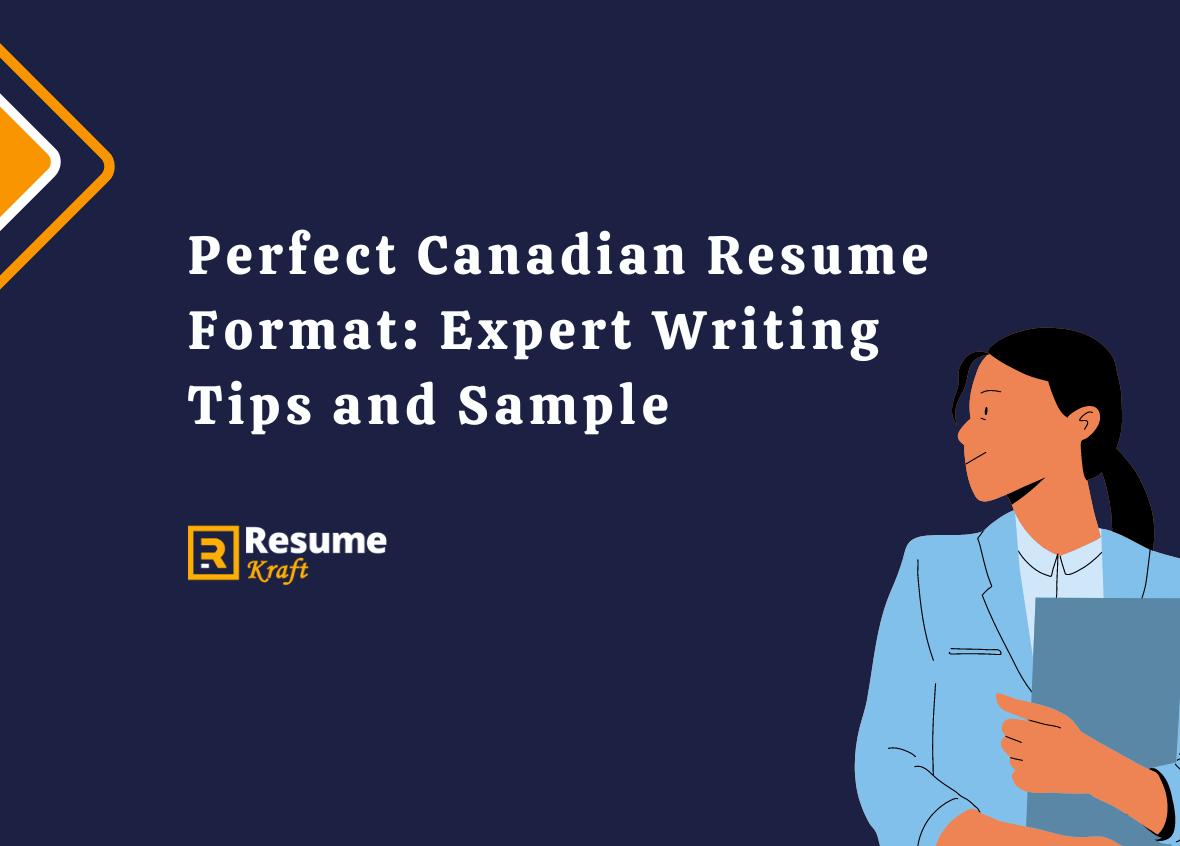
The Canadian job market is a diverse and vibrant space, teeming with opportunities for both local and international job seekers. However, to tap into these opportunities, one needs to understand the nuances of the Canadian resume format. This format, while similar to the American resume format, has its unique characteristics that set it apart.
Unlock the secrets of the perfect Canadian resume format. Our comprehensive guide provides valuable insights, expert tips, and a sample resume to help you stand out in your job search. Get noticed by employers with a professionally crafted Canadian resume that highlights your skills and experiences effectively. Start building your winning resume today.
- Similarities and Differences Between Canadian and American Resumes
- Crafting the Perfect Canadian Resume: Step-by-Step Guide
- Tips for Adapting an Existing Resume for Canadian Jobs
- 10 Canadian Resume Samples
- Common Mistakes to Avoid in a Canadian Resume
- Utilizing Resume Templates and Builders
- Frequently Asked Questions
- Conclusion
Similarities and Differences Between Canadian and American Resumes
At first glance, a Canadian resume may seem identical to its American counterpart. Both formats prioritize a clear, concise presentation of the candidate’s work history, skills, and education. They both aim to provide potential employers with a snapshot of the candidate’s capabilities and achievements. However, a closer look reveals subtle differences that can significantly impact your chances of landing a job in Canada.
One of the key differences lies in the presentation of personal information. While American resumes often include the candidate’s full address, Canadian resumes typically only require the city and province. This is due to Canada’s stringent privacy laws, which limit the amount of personal information employers can request.
Another difference is the emphasis on soft skills in Canadian resumes. Canadian employers value interpersonal skills and cultural fit just as much as technical expertise. Therefore, Canadian resumes often include a section dedicated to highlighting the candidate’s soft skills, such as communication, teamwork, and problem-solving abilities.
Crafting the Perfect Canadian Resume: Step-by-Step Guide
Choosing the Right Canadian Resume Format
The first step in crafting a Canadian resume is selecting the appropriate format. There are three popular formats used in Canada: the Reverse Chronological, Functional, and Combination formats.
Reverse Chronological Format
The Reverse Chronological format is the most common and straightforward resume format. It lists your work experience in reverse chronological order, starting with your most recent job. This format is ideal if you have a solid work history in the field you’re applying for and want to showcase your career progression.
Functional Format
The Functional format, on the other hand, focuses more on your skills and less on your work history. It’s a great option if you’re changing careers, have gaps in your employment, or if your most relevant experience isn’t your most recent.
Combination Format
The Combination format, as the name suggests, combines elements of both the Reverse Chronological and Functional formats. It highlights your skills and achievements upfront, followed by a detailed work history. This format is suitable for seasoned professionals with a diverse range of skills and experiences.
Choosing the right format is crucial as it sets the tone for the rest of your resume. It should align with your career history, the job you’re applying for, and the expectations of Canadian employers.
Choosing the Right Format Based on Experience and Skills
The first step is to choose the right format for your resume. As mentioned earlier, the three popular formats are Reverse Chronological, Functional, and Combination. The choice depends on your work history, skill set, and the job you’re applying for.
If you have a consistent work history in the field you’re applying for, the Reverse Chronological format is ideal. If you’re changing careers or have gaps in your employment, the Functional format would be more suitable. If you’re a seasoned professional with a diverse range of experiences, the Combination format would be the best choice.
Build your resume in just 5 minutes with AI.

Creating a Professional Header with Contact Information
The header of your resume should include your full name and contact information. This includes your phone number, email address, and the city and province where you live. Unlike some countries, it’s not necessary to include personal information like your age, marital status, or nationality in a Canadian resume.
Crafting an Impactful Resume Summary or Objective
The next step is to write a resume summary or objective. This is a brief statement that highlights your key qualifications and career goals. It should be tailored to the job you’re applying for and should grab the employer’s attention.
A resume summary is ideal if you have significant work experience in the field. It should highlight your key achievements and skills. On the other hand, a resume objective is more suitable for career changers or recent graduates. It should focus on your career goals and how your skills and experiences make you a good fit for the job.
Detailing Work Experience Using the STAR Method
The work experience section is a crucial part of your resume. It should provide a detailed overview of your past roles, responsibilities, and achievements. One effective way to present this information is by using the STAR method.
Understanding the STAR Method
The STAR method stands for Situation, Task, Action, and Result. It’s a structured way of presenting your experiences and achievements. Here’s how it works:
- Situation: Describe the context or background of the situation.
- Task: Explain the task or challenge you were faced with.
- Action: Detail the actions you took to address the task or challenge.
- Result: Highlight the results or outcomes of your actions.
Using the STAR method can help you present your experiences in a clear, concise, and impactful way. It allows you to showcase your problem-solving skills and the value you can bring to the role.
Listing Relevant Skills
The skills section of your resume should highlight the skills that are most relevant to the job. These can be a mix of hard skills (technical or job-specific skills) and soft skills (interpersonal skills). Be sure to tailor this section to the job description to show the employer that you have the skills they’re looking for.
Including Education Details
The education section should provide a brief overview of your academic background. This includes the name of the institution, the degree or certification obtained, and the dates of attendance. If you’re a recent graduate, you can also include relevant coursework or projects.
Creating a Canadian resume involves careful planning and strategic presentation of your qualifications. By following these steps, you can create a resume that stands out in the Canadian job market.
Tips for Adapting an Existing Resume for Canadian Jobs
If you’re an international job seeker looking to enter the Canadian job market, you might need to adapt your existing resume to meet Canadian standards. This doesn’t mean you have to start from scratch, but a few key adjustments can make your resume more appealing to Canadian employers.
Converting an Indian Resume to a Canadian Resume
Adapting an Indian resume for the Canadian job market involves a few specific changes. Here are some steps to guide you:
- Customize Your Resume: Tailor your resume to the job you’re applying for. Highlight the skills and experiences that are most relevant to the job description.
- Simplify Your Language: Avoid complex English words and phrases. Use clear, straightforward language to improve readability.
- Remove Personal Information: Canadian resumes typically don’t include a photo, nationality, race, gender, or full address. Remove these details from your resume.
- Use the STAR Method: When detailing your work experience, use the STAR method to present your achievements in a clear, structured way.
- List Recognized Certifications: If you have any certifications, make sure they’re recognized by Canadian employers. If not, consider pursuing equivalent certifications in Canada.
- Include a Resume Summary or Objective: Add a brief statement at the top of your resume that highlights your key qualifications and career goals.
- Standardize Your Education Scores: Instead of listing your CGPA, convert your scores to a GPA scale. If your GPA is less than 3.7, it’s better not to list it.
- Update Your Contact Information: Include a Canadian city and province, along with a Canadian phone number. If you don’t have these yet, consider getting a virtual phone number.
Converting a European CV to a Canadian Resume
European CVs can also be adapted for the Canadian job market. Here are some steps to guide you:
- Remove Personal Information: Like Indian resumes, European CVs often include personal information that’s not required in Canada. Remove details like your birthdate, citizenship, and photo.
- Remove Hobbies: While hobbies are commonly included in entry-level European CVs, they’re typically not included in Canadian resumes. Unless your hobbies are directly relevant to the job, consider removing this section.
- Choose the Right Format: Decide whether a Reverse Chronological, Functional, or Combination format is most suitable for your experiences and the job you’re applying for.
- Include Key Sections: Make sure your resume includes a summary or objective, work history, skills, education, and certifications (if any).
- Use the STAR Method: Detail your work experience using the STAR method to highlight your achievements in a structured way.
- Avoid Paragraphs: Use bullet points instead of paragraphs to improve readability.
- Proofread: Check your resume for grammatical errors. Consider using a proofreading tool or getting a native English speaker to review your resume.
Adapting your resume for the Canadian job market can increase your chances of landing a job. By making these adjustments, you can present your qualifications in a way that’s appealing to Canadian employers.
10 Canadian Resume Samples
Registered Nurse Resume Sample for Canada
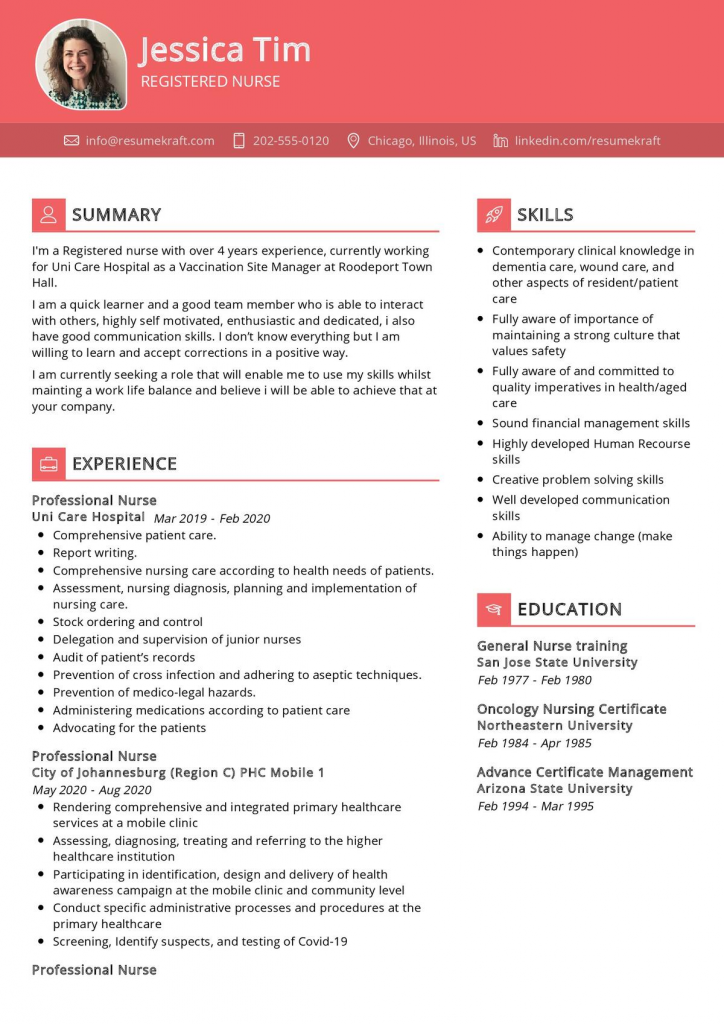
Pharmacist Resume Example for Canada
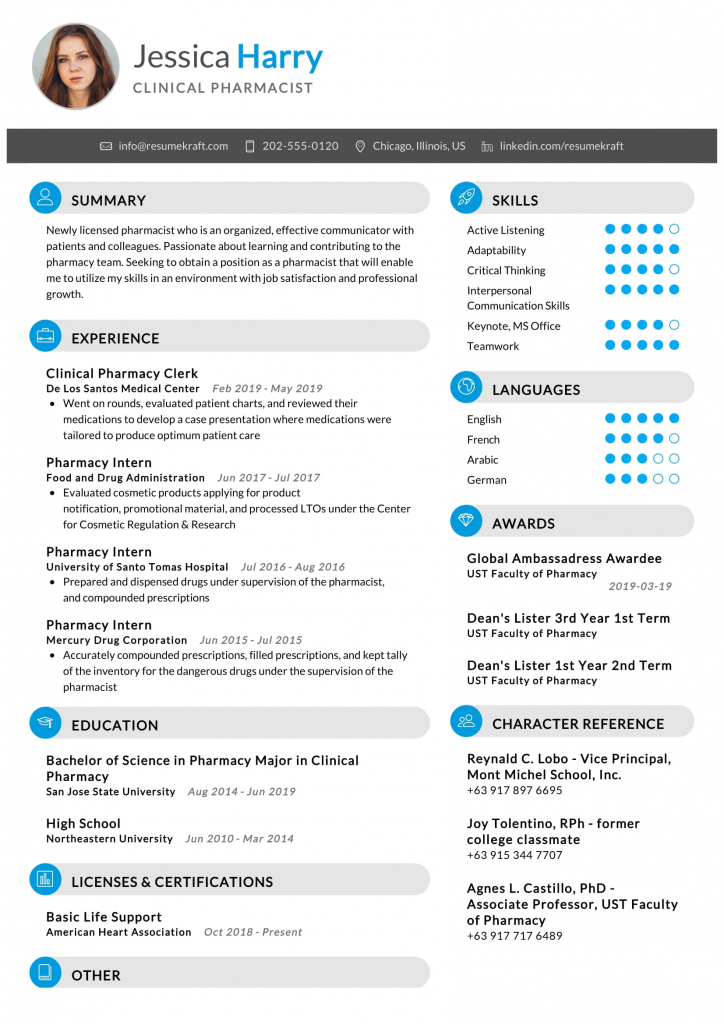
Lawyer Resume Sample for Canada
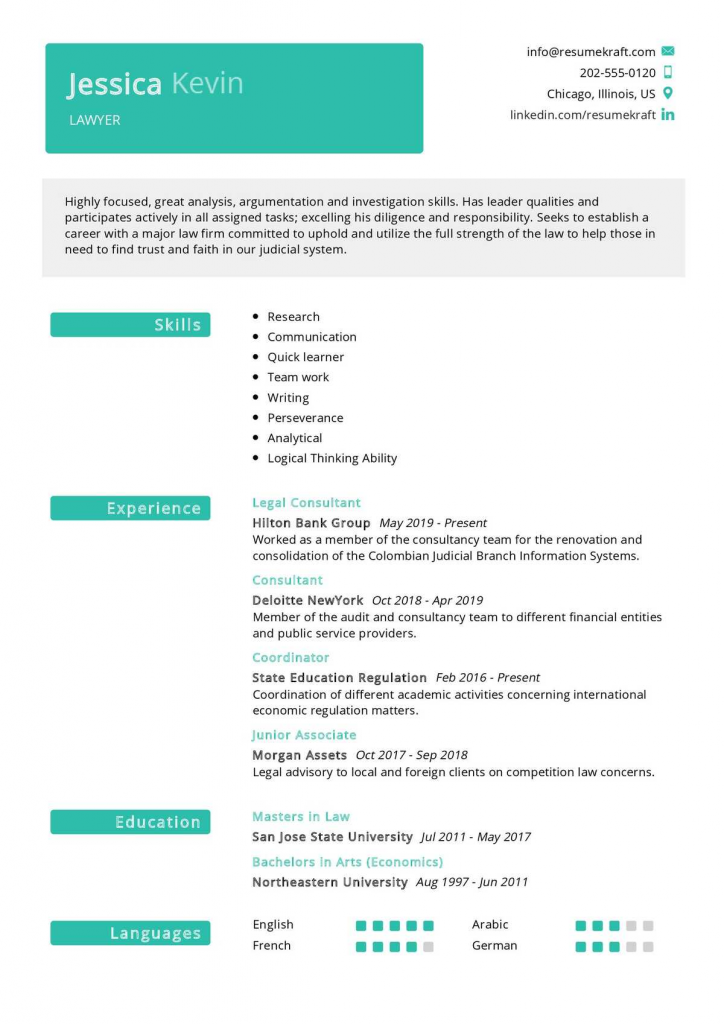
Engineer Resume Sample for Canada

Web Developer Resume Format for Canada
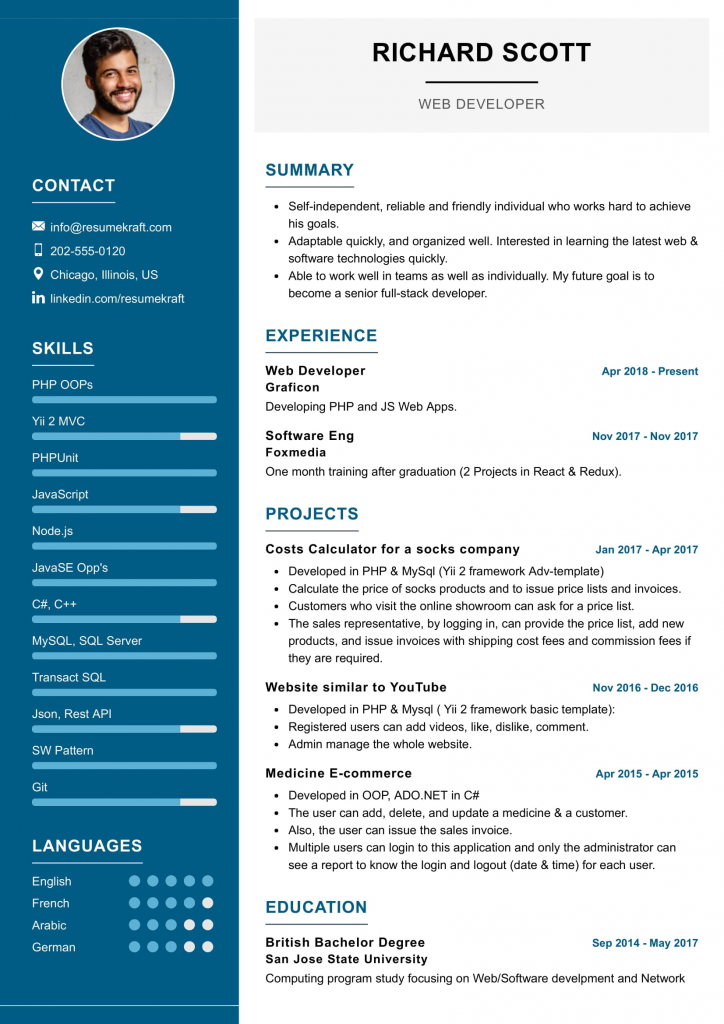
Accountant Resume Sample for Canada
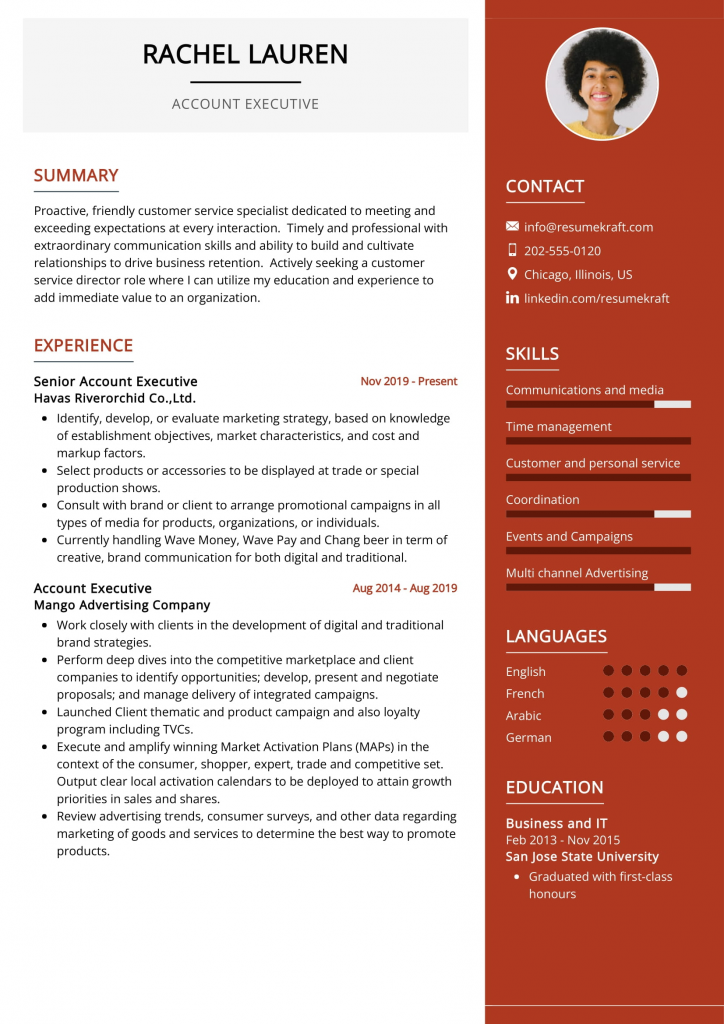
Software Developer Resume Sample for Canada
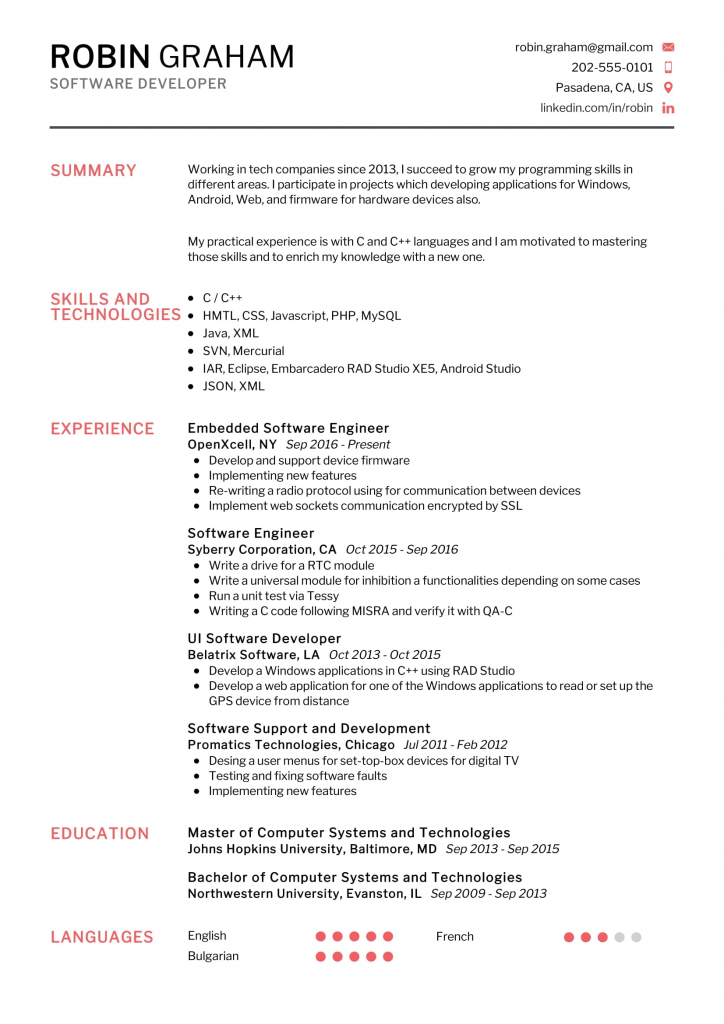
Marketing management Resume Sample for Canada
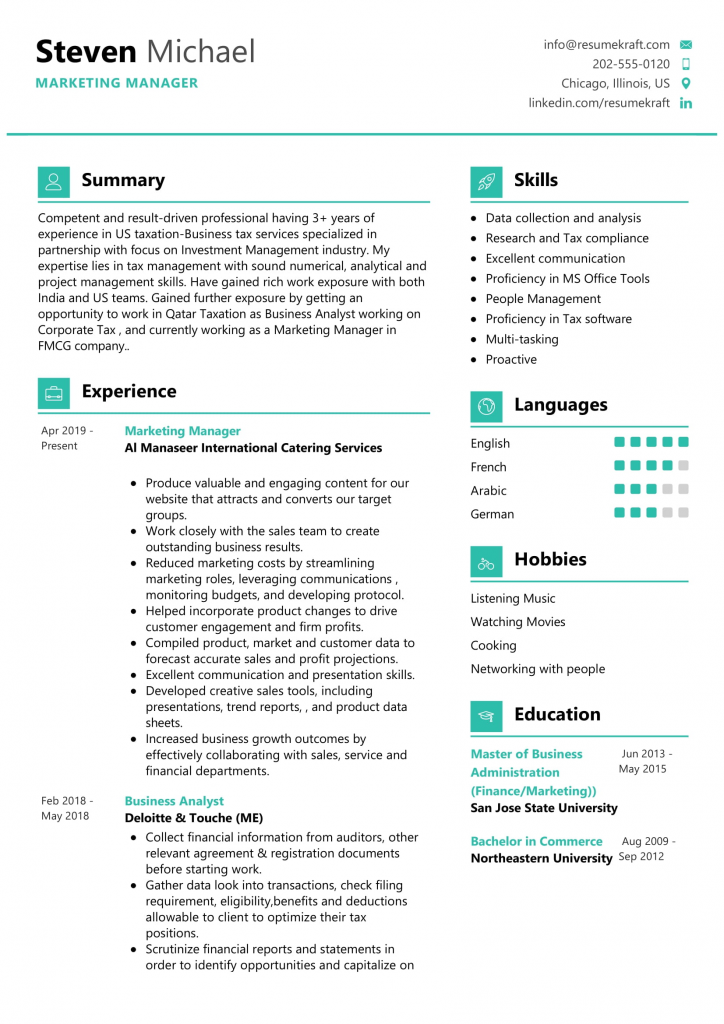
Data science Resume Template for Canada
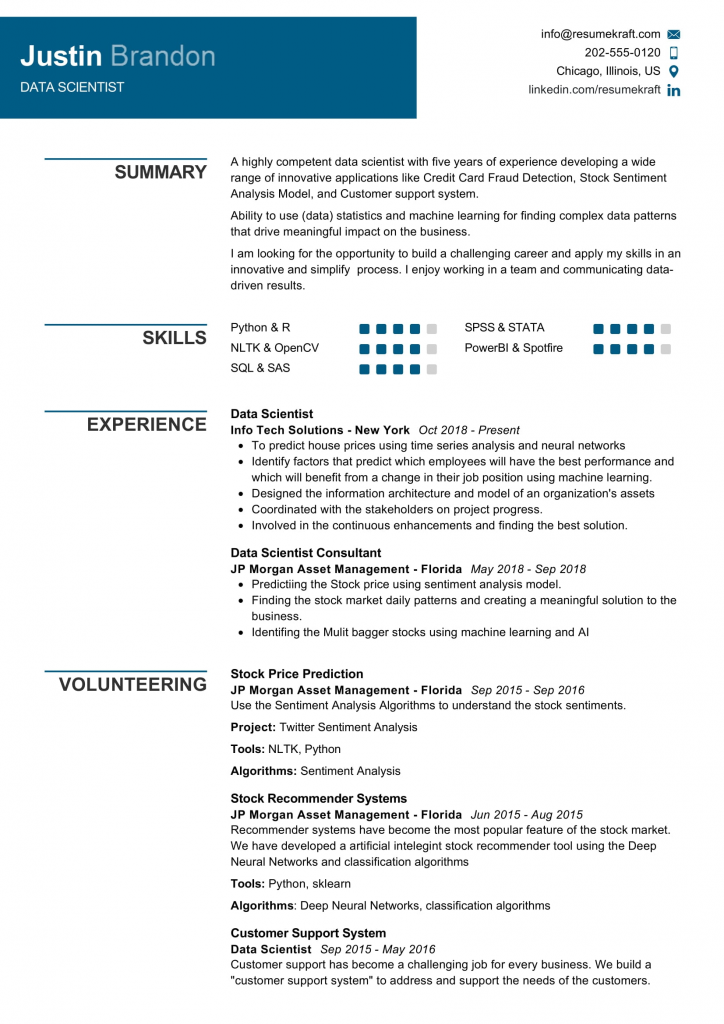
Sales Resume Sample for Canada
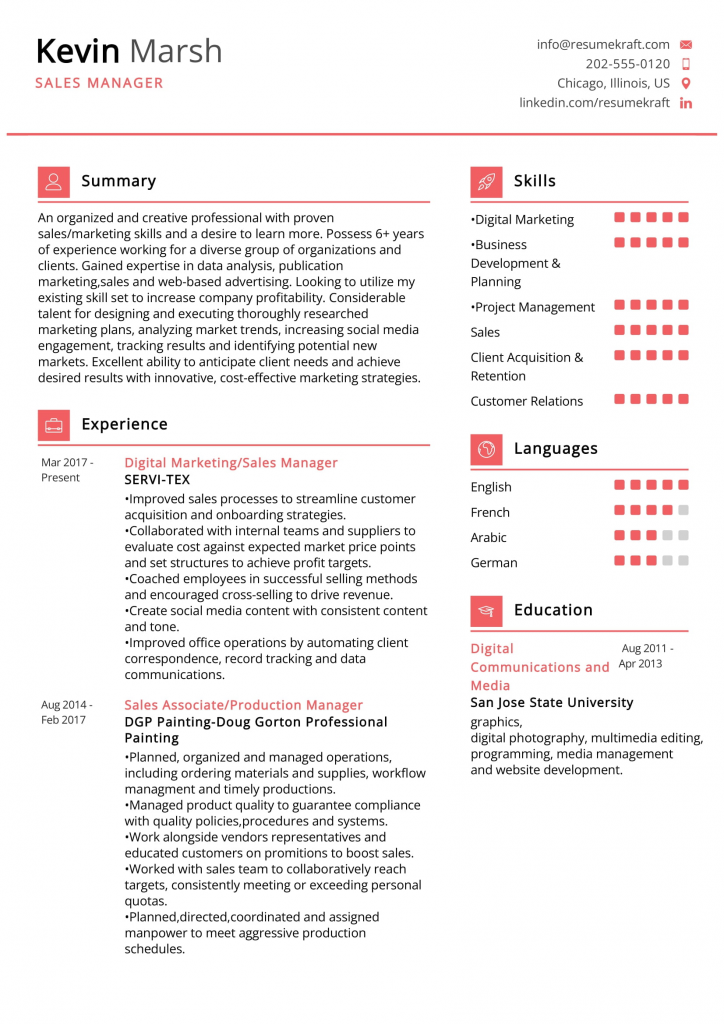
Common Mistakes to Avoid in a Canadian Resume
While crafting a Canadian resume, it’s essential to be aware of common pitfalls that could potentially undermine your chances of landing a job. Here are some mistakes to avoid when creating your Canadian resume.
Including Unnecessary Personal Information
In Canada, it’s not customary to include personal details such as age, marital status, nationality, or a photograph in your resume. Including these could potentially lead to unconscious bias during the hiring process. Stick to professional details such as your name, contact information, skills, work experience, and education.
Using Complex Language
While it’s important to sound professional, using overly complex language or industry jargon can make your resume difficult to understand. Keep your language clear and straightforward. Remember, the goal is to communicate your skills and experiences effectively, not to showcase your vocabulary.
Exceeding the Recommended Length
While there’s no strict rule on resume length in Canada, it’s generally recommended to keep your resume to one or two pages. For students and professionals with less than 15 years of experience, a one-page resume is usually sufficient. For those with more than 15 years of experience, a two-page resume is acceptable. Remember, the goal is to present your most relevant skills and experiences, not to list every job you’ve ever had.
Utilizing Resume Templates and Builders
There are numerous tools available to help you create a professional-looking resume. Resume templates and builders can save you time and ensure your resume is formatted correctly.
Introduction to Resume-Building Platforms
Resume-building platforms are online tools that provide pre-designed templates for resumes. They allow you to input your information into a template and automatically format it into a professional-looking resume. Some platforms also offer additional features such as resume reviews, customization options, and job search tools. check our own resume builder.
Benefits of Using a Resume Template
Using a resume template has several benefits. First, it ensures your resume is formatted correctly, which can save you time and stress. Second, it can help your resume look more professional, which can make a positive impression on employers. Finally, many templates are designed with applicant tracking systems (ATS) in mind, which means they can help your resume get past these systems and into the hands of a human recruiter.
Creating a Canadian resume can be a challenging task, especially for international job seekers. However, by avoiding common mistakes and utilizing available tools, you can create a resume that stands out in the Canadian job market.
Frequently Asked Questions
Navigating the job market in a new country can be a daunting task, and you may have several questions about the process. Here are some frequently asked questions about Canadian resumes to help you better understand the expectations and standards.
While there are many similarities between Canadian and American resumes, there are also some key differences. For instance, Canadian resumes typically do not include personal information such as age, marital status, or a photograph. Additionally, Canadian employers place a high value on soft skills, so it’s important to highlight these in your resume.
No, it’s not customary to include a photo in a Canadian resume. Including a photo could potentially lead to unconscious bias during the hiring process. Stick to professional details such as your name, contact information, skills, work experience, and education.
No, it’s not necessary to list your nationality on a Canadian resume. In fact, including this information could potentially lead to unconscious bias during the hiring process. Your skills and experiences should be the focus of your resume.
Absolutely not. Honesty is crucial when applying for jobs. Even a small lie about your qualifications or work history could lead to job termination or legal consequences. Always be truthful and accurate when creating your resume.
Conclusion
Creating a standout Canadian resume is a crucial step in landing a job in Canada. By understanding the expectations and standards of Canadian employers, you can tailor your resume to highlight your most relevant skills and experiences.
Remember, a Canadian resume is more than just a list of your past jobs. It’s a tool to showcase your abilities, achievements, and potential. It’s your first impression on an employer, so make it count.
Whether you’re a local job seeker or an international candidate, following these guidelines can help you create a resume that stands out in the Canadian job market. Good luck with your job search!

Build your resume in 5 minutes
Our resume builder is easy to use and will help you create a resume that is ATS-friendly and will stand out from the crowd.
Recommended Reading:

